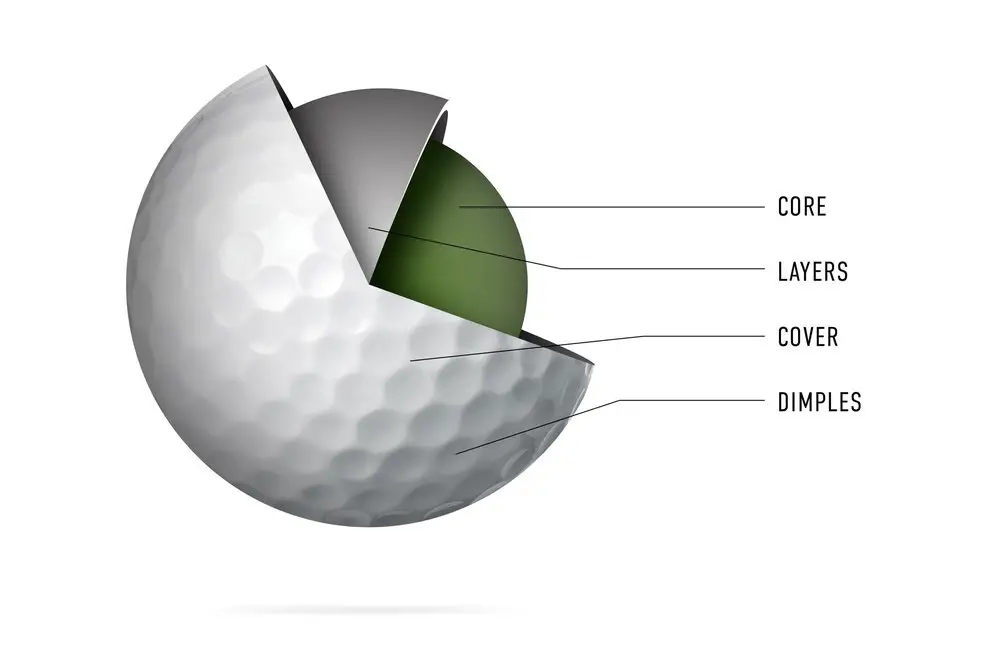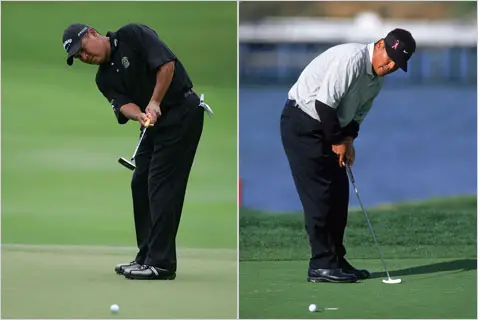What Is The Density Of A Golf Ball

Golf, a game of precision and skill, is governed by numerous factors that impact performance. One such crucial element is the density of a golf ball. The density of a golf ball refers to the measure of how much mass is packed into a given volume of the ball. Understanding the concept of density and its implications in the world of golf is essential for players seeking to optimize their performance on the course.
In this article, we delve into the intricacies of golf ball density, exploring what it means, how it is determined, and its influence on various aspects of the game. We will examine the factors that contribute to the density of a golf ball, its relationship with performance characteristics such as distance, trajectory, and feel, and the significance of finding the right balance between density and other factors.
By gaining a deeper understanding of golf ball density, players can make informed decisions when selecting the most suitable ball for their game. So, let’s dive into the fascinating world of golf ball density and uncover the secrets behind this vital component of the sport.

What Determines the Density of a Golf Ball?
To understand the density of a golf ball, we need to examine the key factors that contribute to its determination. These factors include the material composition, core design, cover materials, and the impact of dimples on density and aerodynamics.
Material Composition and its Impact on Density
The material composition of a golf ball significantly affects its density. Golf balls are typically made from a combination of materials, including a solid or liquid core, an inner cover layer, and an outer cover. Each component’s density contributes to the overall density of the ball.
For example, golf balls with a solid core made from high-density materials such as rubber or synthetic compounds will have a higher overall density. On the other hand, golf balls with liquid cores or low-density materials will exhibit a lower overall density.
Core Design and Density Variations
The design of the core, which forms the innermost layer of the golf ball, also influences its density. Cores can vary in size, composition, and construction. Multi-layer golf balls, for instance, may have a dual-core or even a multi-core design, where different materials with varying densities are strategically layered to achieve specific performance characteristics.
The core’s density affects factors such as compression, energy transfer, and ball speed. A higher-density core can provide greater energy transfer upon impact, resulting in increased ball speed. Conversely, a lower-density core may offer softer feel and enhanced control.
Cover Materials and Density Considerations
The cover materials used in golf balls also contribute to their density. Golf ball covers are typically made from materials such as urethane, surlyn, or ionomer blends. These materials vary in density and offer different performance attributes.
Urethane covers, for example, are denser and provide excellent control, spin, and feel. Surlyn covers, on the other hand, are less dense and offer durability and distance. The choice of cover material depends on the desired performance characteristics and the trade-offs between density, feel, spin, and durability.
Impact of Dimples on Density and Aerodynamics
The dimples on a golf ball play a crucial role in its aerodynamics and, indirectly, its density. The presence of dimples helps reduce aerodynamic drag, allowing the ball to achieve a more efficient and consistent flight.
While dimples do not directly affect the density of the golf ball, their presence alters the airflow around the ball during flight. This, in turn, affects the lift and drag forces acting on the ball, resulting in variations in ball flight and distance.
Understanding the Relationship Between Density and Performance
Density is intricately linked to various performance aspects of a golf ball. Understanding this relationship can provide valuable insights into how density affects ball flight, distance, spin control, and overall feel.
The Role of Density in Ball Flight
Density influences the ball’s ability to penetrate the air and maintain stability during flight. A higher-density ball tends to have a more penetrating ball flight, which can be advantageous in windy conditions. The lower-density balls, on the other hand, may experience more lift and achieve a higher trajectory.
Impact on Distance and Trajectory
The density of a golf ball plays a crucial role in achieving optimal distance and trajectory. Higher-density balls, with their penetrating flight and reduced air resistance, can often travel farther. Lower-density balls, with increased lift, may achieve a higher trajectory and greater carry distance.
However, it’s important to note that distance is not solely determined by density. Other factors, such as compression, spin, and launch angle, also contribute to distance performance.
Spin Control and Density Influence
Spin control is a critical aspect of golf ball performance, particularly around the greens. Density affects the ball’s ability to generate spin upon contact with the clubface. Higher-density balls tend to produce more backspin, which can be advantageous for approach shots that require stopping the ball quickly on the green.
Lower-density balls may generate less spin, which can be beneficial for golfers seeking more rollout on their shots or for shots that require less backspin, such as driving into the wind.
Feel and Perception of Density
The density of a golf ball can impact the overall feel and perception of the ball during play. Higher-density balls may offer a firmer feel upon impact, providing a sense of responsiveness and control. Lower-density balls, on the other hand, may provide a softer feel, offering enhanced feedback and a more cushioned sensation.
Golfers have different preferences when it comes to the feel of a golf ball, and finding the right density that matches their personal preferences and playing style can significantly impact their performance and overall enjoyment on the course.
Measurement and Units of Golf Ball Density
To quantify the density of a golf ball, it is measured using standard units of measurement: grams per cubic centimeter (g/cm³). This unit represents the mass (in grams) of the ball divided by its volume (in cubic centimeters).
Various techniques and equipment can be employed to measure the density of golf balls accurately. Manufacturers, researchers, and golf governing bodies use these measurements to ensure compliance with regulations and standards.
The density of golf balls can vary within a specific range depending on the construction, materials, and design choices made by manufacturers. It is essential to consider that the density of a golf ball is just one aspect that contributes to its overall performance.
Factors Affecting Density Variations Among Golf Balls
Different factors contribute to the density variations observed among various golf balls. These factors include compression, multi-layer construction, fillers and additives, and manufacturing processes.
Compression and its Relationship to Density
Compression refers to the amount a golf ball compresses upon impact with the clubface. Compression affects the feel and performance of a golf ball, but it is not directly correlated with density.
Golf balls with higher compression tend to exhibit a higher overall density. This is because higher compression balls often feature a denser core and cover materials, which contribute to their overall density. However, compression and density are separate characteristics that should be considered independently when selecting a golf ball.
Multi-Layer Construction and Density Variances
Many modern golf balls feature multi-layer constructions, where different layers with varying materials and densities are combined to achieve specific performance attributes. The varying densities of these layers, including the core, mantle, and cover, can result in density variances within the ball.
For example, a golf ball with a high-density core, surrounded by lower-density mantle and cover layers, may exhibit an overall density that is an average of these components. The strategic combination of different densities contributes to the desired performance characteristics of the ball.
Fillers and Additives Impacting Density
Manufacturers often incorporate fillers and additives into golf ball construction to fine-tune performance characteristics. These fillers and additives can impact the overall density of the golf ball.
For instance, certain fillers or additives may have lower densities, resulting in a reduction in the overall density of the ball. Manufacturers carefully select and balance these materials to achieve the desired density and performance attributes.
Manufacturing Processes and Density Control
The manufacturing processes employed by golf ball manufacturers can also influence density variations. Factors such as molding techniques, temperature control, and curing processes can impact the density of the materials used in ball construction.
Manufacturers have precise control over these processes to ensure consistency and quality in the final product. By carefully controlling the manufacturing processes, they can achieve the desired density and performance characteristics for each golf ball model.
In Part 2, we will continue our exploration of golf ball density, examining the importance of balancing density with other performance factors, exploring different types of golf balls based on density, and understanding how golf ball density relates to golfers’ skill levels.
Stay tuned for an in-depth understanding of the fascinating world of golf ball density!
Importance of Balancing Density with Other Performance Factors
While density plays a crucial role in golf ball performance, it is important to consider how it balances with other factors to optimize overall playability. Here, we explore the interplay between density and factors such as compression, spin, and distance.
Compression and Density Interplay
Compression refers to the degree to which a golf ball deforms upon impact with the clubface. It affects the ball’s feel, control, and the transfer of energy from the club to the ball. While compression and density are distinct characteristics, they are interconnected in terms of performance.
Golf balls with higher compression often exhibit higher density, as the materials used in their construction tend to be denser. Higher compression balls generally offer more control, better feedback, and are preferred by players with higher swing speeds. Conversely, lower compression balls, which may have lower density, offer a softer feel, increased distance, and are suitable for players with slower swing speeds.
Trade-offs Between Density, Spin, and Distance
Achieving an optimal balance between density, spin, and distance is essential. Higher-density balls tend to generate more spin due to their ability to compress more upon impact. Increased spin can provide greater control around the greens but may result in a loss of distance.
On the other hand, lower-density balls may produce less spin, reducing control but potentially increasing distance due to their ability to compress less. Balancing density with spin and distance preferences is crucial, and golfers should consider their playing style, course conditions, and personal preferences when choosing a ball.
Personal Preference and Finding the Right Balance
Ultimately, personal preference plays a significant role in selecting a golf ball. Each golfer has different priorities and desires when it comes to performance characteristics. Some may prioritize control and feel, while others may prioritize distance and forgiveness.
Finding the right balance between density, compression, spin, and other factors involves experimenting with different golf ball models and understanding how they perform under various conditions. Golfers are encouraged to try out different balls and pay attention to their performance on the course to determine the optimal combination for their game.
Exploring Different Types of Golf Balls Based on Density
Golf balls are available in a wide range of options, each offering distinct characteristics based on density and other performance factors. Here, we explore different types of golf balls and how density influences their performance.
High-Density Golf Balls for Specific Conditions
Some golf balls are designed with higher density to cater to specific playing conditions. These balls are often preferred in windy conditions due to their ability to pierce through the air with a more penetrating ball flight. High-density balls can offer increased control and stability in challenging wind conditions, allowing golfers to maintain accuracy and distance.
Low-Density Golf Balls for Soft Feel and Control
On the other end of the spectrum, low-density golf balls provide a soft feel and increased control. These balls are often preferred by golfers who prioritize a gentle touch around the greens and desire a responsive feedback upon impact. Low-density balls can offer a delicate touch and improved finesse, allowing golfers to execute precise shots with confidence.
Medium-Density Golf Balls as Versatile Options
Many golf balls fall within the medium-density range, offering a versatile balance between various performance characteristics. These balls cater to a wide range of golfers, providing a combination of distance, control, and feel. Medium-density balls are often chosen by golfers seeking a well-rounded performance across different aspects of their game.
How Golf Ball Density Relates to Golfers’ Skill Levels
Golf ball density can have different implications for golfers of varying skill levels. Here, we explore how density can impact performance for beginner, intermediate, and advanced golfers.
Beginner Golfers and Forgiving, Lower-Density Balls
Beginner golfers often prioritize forgiveness and distance. Lower-density balls can be beneficial for beginners, as they tend to provide a softer feel, increased launch, and forgiveness on off-center hits. These balls can help beginners develop confidence in their swing and enjoy the game while working on improving their skills.
Intermediate Golfers and Balancing Density with Performance
Intermediate golfers are typically looking to refine their skills and improve their overall performance. Balancing density with other performance factors becomes crucial at this stage. Intermediate golfers may experiment with different balls, considering factors such as compression, spin, and feel to find a ball that complements their game and enhances their performance.
Advanced Golfers and the Influence of Density on Shot Shaping
Advanced golfers have honed their skills and are often looking to fine-tune their performance. Density can play a role in shot shaping for these golfers. Advanced players may select balls with specific density characteristics to achieve the desired flight, spin, and control for shaping their shots. They have the ability to optimize their game by selecting balls that align with their preferences and playing style.
Conclusion
Understanding the density of a golf ball provides valuable insights into its performance characteristics. Density influences ball flight, distance, spin control, and overall feel. Factors such as material composition, core design, cover materials, and the presence of dimples impact the density of a golf ball.
Balancing density with other performance factors, such as compression, spin, and distance, is crucial in selecting the right golf ball. Personal preferences and individual playing styles also play a significant role in finding the optimal ball for each golfer. By exploring different types of golf balls based on density and considering skill levels, golfers can make informed choices that enhance their game and enjoyment on the course.
Remember, finding the right golf ball that suits your preferences and performance goals may require experimentation and trying out different options. Embrace the journey of discovering the perfect ball that unlocks your full potential on the fairways and greens.





